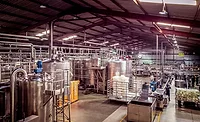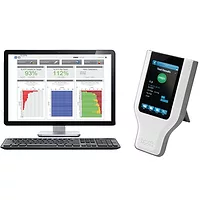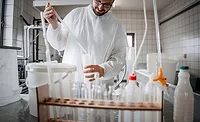Effective Sanitation Programs Rely on Environmental Monitoring

As a therapist, doctor, plumber or any effective problem solver may tell you, the first step in overcoming any problem is understanding the problem. The same is true in developing and executing an effective sanitation/hygiene program in a food production or processing environment. To overcome specific threats to the safety or quality of your food products, you must first understand the specific risks that your operation faces.
Food safety test kit and equipment manufacturers have developed quick, easy and accurate tests to help food producers understand the specific risks their operations face.
“We have worked with food companies of all types as they continue to improve and innovate their food safety programs,” says Neogen’s Joe Heinzelmann. “As varied as the particular food products and producers can be, it generally boils down to determining what could conceivably contaminate their products, and what steps that producer can take to reduce the risk of that contamination ever occurring. Sanitation monitoring is an obvious place to start, as suboptimal sanitation efforts can limit a company’s other efforts to ensure the safety and quality of their food products.”
In the food industry, adenosine triphosphate (ATP) systems have become critical tools for sanitation/hygiene monitoring. They provide the perfect instant solution to verify the effectiveness of critical sanitation protocols needed to help ensure the safety and quality of food products. Many facilities now rely on ATP systems to move forward with production runs and make important decisions on personnel performance, equipment serviceability, equipment selection and modifications to their Sanitation Standard Operating Procedures.
The newest generation of ATP systems features radio frequency identification (RFID) technology that allows testers to zip from food production facility testing site to testing site, in much the same way drivers with RFID-enabled passes zip through tollbooths as others fumble for the correct change. The new technology has also greatly simplified ATP test data plan creation and test data collection and interpretation. It creates test plans for supervisors that can be customized to always test known trouble spots and randomly test other areas of less concern.
Neogen’s new AccuPoint® Advanced ATP Hygiene Monitoring System is an example of the newest generation of ATP systems. The system features samplers with new technology to more consistently collect any potential residues left behind after sanitation efforts; an enhanced compact instrument to better detect any residues collected by the samplers; and user-friendly data management software to organize and analyze the system’s test results.
“As critical as the information gathered by an ATP system is to the safety and quality of food products, we view that information as only an important part of an effective environmental-monitoring program,” says Heinzelmann. “Pathogens, such as Listeria and Salmonella, can exist within an acceptable threshold for even the best of ATP test systems. It’s critical that food producers also test their production environments for the presence of specific pathogens of concern to their operation as a critical first step in reducing the risks posed by the pathogens.”
The newest pathogen testing technology makes it simple and relatively quick for almost anyone to produce accurate, DNA-definitive results for pathogens, including Salmonella, Escherichia coli O157:H7, Listeria spp. or Listeria monocytogenes.
Neogen’s isothermal ANSR® system is an example of the newest pathogen testing technology. The company’s assay for Listeria species offers a 16-hour enrichment and 17 hours as a total time-to-results, as does its assay for L. monocytogenes. Neogen’s culture media technology also allows the testing for L. monocytogenes and Listeria spp. from a single, enriched sample. All of the company’s ANSR assays are validated through the AOAC Research Institute.
In addition to screening test kits, Neogen has developed tests and services around confirmation and identification. One example is ANSR for Salmonella, which has been granted AOAC Official MethodsSM status for use as a confirmatory method. A comprehensive AOAC validation study proved that the assay can be used as a rapid, accurate, adjunct or alternative to biochemical testing for the identification of presumptive Salmonella spp. isolates.
Neogen recently announced that it has launched a new Test Drive program in North America for its ANSR rapid pathogen detection system. The program is a limited-time, risk-free, 30-day trial for an on-site evaluation of the ANSR system using any or all of Neogen’s ANSR assays.
“Test Drive is an innovative path that enables prospective customers to easily acquire a new technology for compliance and brand protection without investing in capital equipment,” says Heinzelmann. “The Test Drive program is designed to show prospective, qualified food laboratories how easy rapid molecular pathogen testing can be. ANSR provides results in as little as 40 minutes, post-enrichment, which improves efficiencies at the plant.”
For more information, please contact Neogen at 800.234.5333 or 517.372.9200.
www.neogen.com
Looking for quick answers on food safety topics?
Try Ask FSM, our new smart AI search tool.
Ask FSM →








